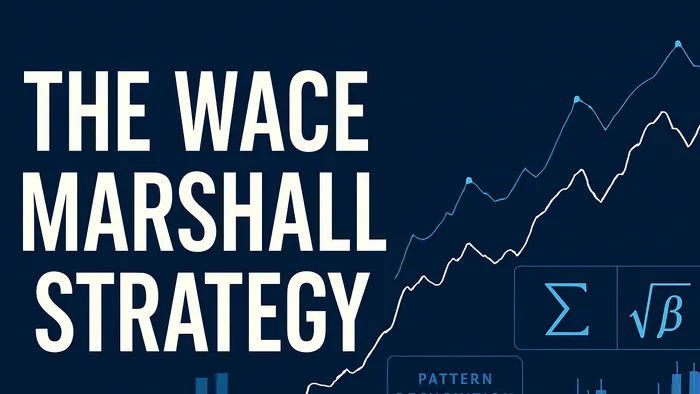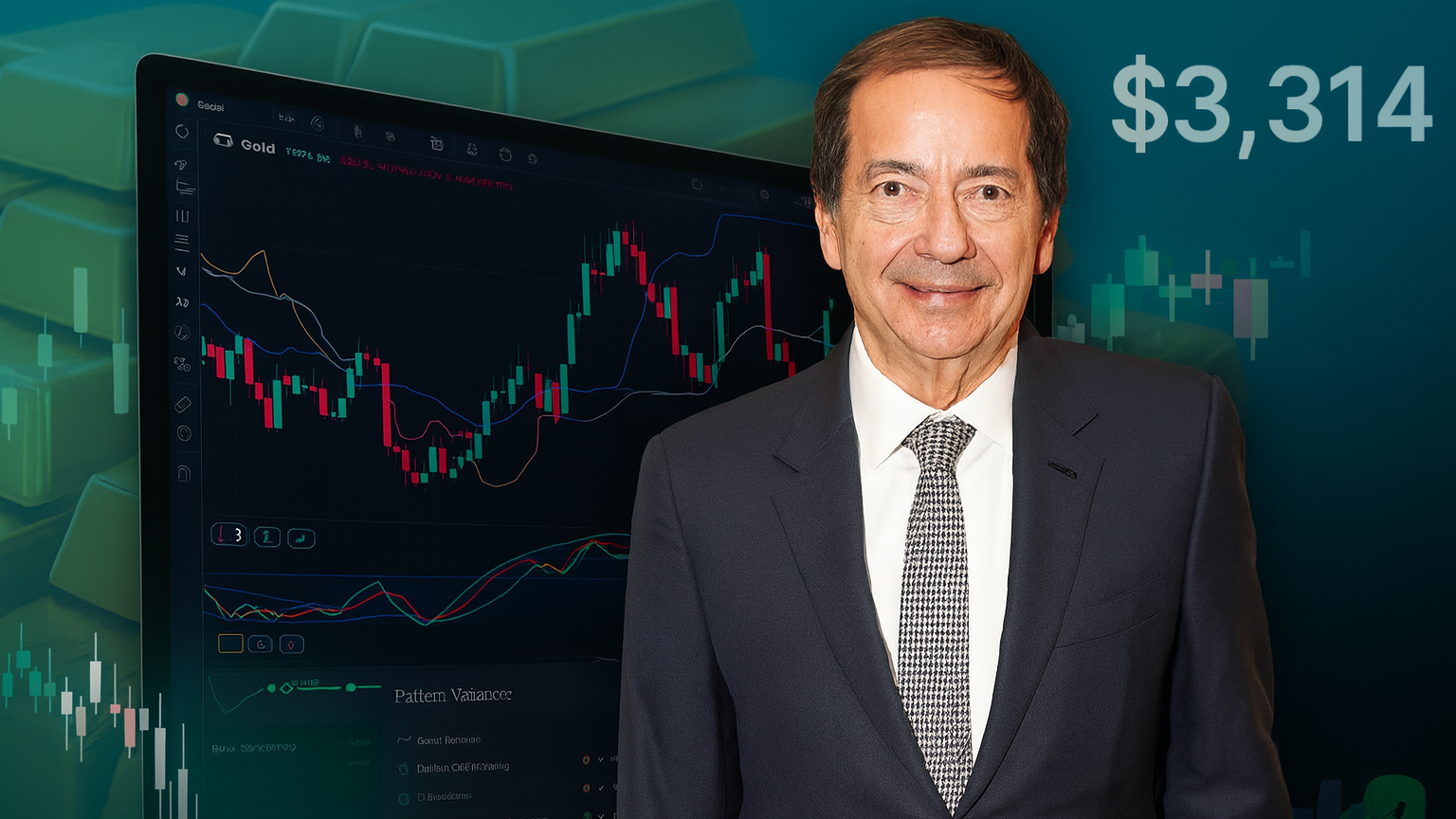Explore a data-driven trading strategy that merges quantitative analysis with traditional techniques for enhanced market performance.
The Marshall Wace Strategy combines data‑driven quantitative trading with traditional investing techniques, offering precision, speed, and scalability. Here's what you need to know:
- What It Is: A trading approach by Marshall Wace, a hedge fund managing over $65 billion as of 2025, using their MW TOPS system to analyze market data and generate trading signals.
- Core Benefits:
- Decisions based on systematic analysis, not emotions.
- Real‑time trading execution.
- Analyzes vast amounts of market data for better insights.
- Key Components:
- MW TOPS: Identifies trading opportunities through data processing, pattern recognition, and risk assessment.
- Quantitative Indicators: Use statistical models like momentum, mean reversion, and volume analysis to refine strategies.
- Risk Management: Dynamic position sizing and portfolio balancing to protect against market volatility.
- LuxAlgo Toolkits: The Price Action Concepts, Signals & Overlays, and Oscillator Matrix toolkits offer pre‑built indicators and screeners that complement quantitative models.
- Why It Matters: Algorithmic trading now accounts for 60–75 percent of trading volume in U.S. and European equity markets, making these methods essential for modern traders.
Quick Tip: Start by mastering data analysis, building automated systems, and refining risk controls. This approach delivered returns such as 22.59 percent for Marshall Wace's Market Neutral TOPS fund in 2024.
For a deeper dive into creating signals, managing portfolios, and leveraging AI, explore the full strategy details below. If you need hands‑on templates, the LuxAlgo AI Backtesting platform lets you generate thousands of strategies in minutes.
Main Components of Marshall Wace Analysis
Using MW TOPS for Market Analysis
The MW TOPS (Trade Optimized Portfolio System) is designed to sift through market data and pinpoint trading opportunities. Here's how its main components work:
| Component | Function | Impact |
|---|---|---|
| Data Processing | Analyzes real‑time market feeds | Identifies immediate opportunities |
| Pattern Recognition | Spots recurring market patterns | Anticipates potential price movements |
| Risk Assessment | Evaluates position exposure | Supports portfolio stability |
Once the system processes this data, statistical techniques are applied to fine‑tune trading signals.
Combining Market Data with Statistics
Statistical modeling is at the heart of quantitative trading. By blending historical prices, trading volumes, and asset correlations, traders can generate insights that guide decision‑making.
As Investopedia puts it:
"Quantitative trading utilizes mathematical functions and automated trading models to make trading decisions."
This analytical approach helps traders sidestep emotional biases, especially during turbulent market conditions. According to research from J.P. Morgan, 61 percent of institutional investors believe that artificial intelligence and machine learning will significantly influence trading in the years ahead.
Data Collection Methods
Reliable market analysis starts with systematic data collection. Here are the key areas to focus on:
- Data Quality Assessment
Regular checks ensure data accuracy, preventing costly errors. Ongoing monitoring keeps the information reliable. - Multiple Source Integration
Pulling data from a variety of market sources creates a well‑rounded analysis framework. This cross‑referencing validates trading signals and provides a more complete market view. The LuxAlgo Library of free indicators is a popular resource for corroborating signals across five charting platforms. - Reliability Verification
Data is verified for:- Accuracy of market details
- Completeness of datasets
- Consistency across sources
- Timeliness of updates
- Uniqueness of the information
Real‑time monitoring tools play a critical role here, enabling firms to catch and fix errors quickly. This leads to better trading decisions and stronger portfolio performance.
Step‑by‑Step Strategy Setup
Creating Trade Signals
The foundation of the strategy lies in generating reliable trade signals using momentum and mean‑reversion algorithms. Here's how to design an effective signal‑generation system:
| Signal Type | Key Indicators | Signal Conditions |
|---|---|---|
| Momentum | SMA Crossovers | Buy: Short‑term SMA crosses above long‑term SMA Sell: Short‑term SMA crosses below long‑term SMA |
| Mean Reversion | RSI + Bollinger Bands | Buy: RSI < 30 and price below lower Bollinger Band Sell: RSI > 70 and price above upper Bollinger Band |
| Confirmation | Volume + Price Action | Buy/Sell: Increased volume on breakouts and price closes beyond signal thresholds |
Nick Nielsen, Head of Quantitative Trading at Marshall Wace, highlights the importance of refining strategies over time:
"Try new things and sample the data and actually look at the statistics. That's how you continue to make improvements. That's how you get better at all the decision‑making."
With these signals in place, the next step is to construct a well‑balanced portfolio.
Building Your Portfolio
Start by evaluating risk factors like market volatility, asset correlation, and overall portfolio exposure. This method has been a cornerstone of Marshall Wace’s success, managing over $65 billion in assets as of January 2025.
For effective portfolio management, focus on these key areas:
- Risk Assessment: Review account equity, asset volatility, correlations among holdings, and define your maximum drawdown tolerance.
- Position Sizing: Allocate positions based on account equity, asset risk levels, and their correlation to other holdings.
- Portfolio Balance: Diversify across asset classes, market sectors, geographic regions, and trading strategies.
Once your portfolio is structured, precise trade execution becomes the next critical step.
Trade Execution Guide
Accurate trade execution and constant monitoring are vital for the success of any strategy. For instance, Marshall Wace demonstrated the impact of precise execution when they earned $36 million from a short position during Banco Espírito Santo's collapse in August 2014.
Key elements of execution include:
- System Setup: Automate trade execution to minimize costs and slippage, integrate real‑time market feeds, and maintain position monitoring dashboards.
- Cost Management: Keep tabs on transaction costs, including spreads, and optimize lot sizes for better cost efficiency.
- Performance Tracking: Maintain detailed trade records, compare actual results to expectations, and adjust strategy parameters based on performance data.
Essential Calculations and Metrics
Measuring Market Performance
The performance of the Marshall Wace Strategy in 2024 highlights its effectiveness. The Market Neutral TOPS fund delivered a strong return of 22.59 percent, while the Alpha Plus fund achieved 15.86 percent. To understand such results, consider these key metrics:
| Metric | Formula | Purpose |
|---|---|---|
| Alpha (α) | Portfolio Return − (Risk‑free Rate + β × Market Risk Premium) | Identifies returns exceeding market expectations |
| Beta (β) | Covariance(Portfolio, Market) / Variance(Market) | Measures how sensitive the portfolio is to market movements |
| Sharpe Ratio | (Portfolio Return − Risk‑free Rate) / Portfolio Standard Deviation | Assesses returns relative to risk |
These metrics complement the broader strategy, particularly in areas like signal generation and risk management.
Position Size Calculator
A critical tool for managing risk is the Position Size Calculator, which determines the appropriate trade size based on risk tolerance. The formula is:
Position Size = (Account Risk Amount) / (Price Risk Per Unit)
Here’s an example for a $50 000 account with a 1 percent risk tolerance:
- Maximum risk per trade: $500 ($50 000 × 1 percent)
- Entry price: $50
- Stop‑loss: $45
- Risk per unit: $5
- Position size: 100 units ($500 ÷ $5)
This approach ensures that risk remains controlled, even in volatile markets.
Signal Confirmation Rules
Signal validation is essential for refining trade decisions. Use the following framework:
| Confirmation Type | Primary Indicator | Secondary Validation |
|---|---|---|
| Trend Direction | 200‑day Moving Average | Price position relative to the moving average |
| Momentum | MACD | RSI (30/70 levels) |
| Volume Validation | On‑Balance Volume (OBV) | Price‑volume correlation |
- Combine multiple indicators to filter out unreliable signals.
- Validate breakouts by analyzing volume patterns.
- Factor in market catalysts and major economic events.
- Always implement stop‑loss levels to minimize losses.
The effectiveness of these techniques is evident in the performance of Marshall Wace's Eureka fund, which achieved a 14 percent return in 2024. This success reflects the use of advanced quantitative analysis and meticulous signal validation.
Risk Control and Strategy Updates
Active Risk Management
Effective risk management today requires flexibility and real‑time adjustments based on market conditions. Take Goldman Sachs in 2018 as an example: they recorded 220 winning days against just 31 losing days, thanks to stringent risk control measures.
| Risk Level | Market Condition | Adjustment Action |
|---|---|---|
| Low | Normal volatility | Standard 1 percent risk per trade |
| Medium | Increased volatility | Reduce position sizes by 50 percent |
| High | Market turbulence | Hedge positions, limit exposure to 0.5 percent |
Key protective actions include:
- Using trailing stops, monitoring correlations, and rebalancing portfolios regularly
- Leveraging the PAC Screener to identify emerging risk factors across hundreds of assets in seconds
- Adjusting exposure levels based on current market conditions
- Employing systematic hedging protocols to limit downside risks
These strategies not only safeguard portfolios but also make room for leveraging advanced technologies like AI for pattern detection.
AI Pattern Detection
Machine learning is transforming how traders identify and respond to market patterns. Eric Jackson of EMJ Capital shared his experience:
"I turned my back on being a fundamental manager to relying on this model because [of] the results we were seeing, especially this year. It had gotten so much better from a performance perspective [and] a risk management perspective."
AI applications in trading focus on three main areas:
- Market Regime Detection
AI algorithms analyze factors like volatility trends, price momentum, and shifts in correlation to identify market conditions, enabling traders to refine their strategies accordingly. - Signal Enhancement
Machine learning helps filter out false signals, adapt to market changes, and improve the reliability of trading signals. - Risk Assessment
Advanced systems evaluate portfolio risk by monitoring position correlations, optimizing position sizes, and recommending hedging adjustments.
By improving the quality of signals and risk analysis, AI strengthens the dynamic adjustments outlined earlier. Pairing these insights with advanced options strategies can further protect against sudden market volatility.
Advanced Risk Protection
Options strategies provide a robust defense against unpredictable market swings. For instance, at a price of $40.75, a protective strangle can be created by:
- Buying an October 42 call for $2.25 ($225)
- Buying an October 38 put for $2.00 ($200)
- Total investment: $425
To maximize the effectiveness of such strategies:
- Regularly monitor implied volatility (IV) levels
- Compare current IV with historical averages to gauge market expectations
- Select options strategies that align with anticipated volatility
- Stick to strict position sizing rules, like the 1 percent risk guideline
Consistent reviews and updates to your strategies ensure they remain aligned with evolving market conditions.
Conclusion: Putting It All Together
Main Points Review
The Marshall Wace Strategy blends cutting‑edge technology with human expertise to uncover and take advantage of market inefficiencies. As Paul Marshall aptly puts it: "A machine beats a man, but a man plus a machine beats a machine".
| Component | Key Implementation Focus | Expected Outcome |
|---|---|---|
| Data Analysis | Process up to 20 petabytes daily | Better signal detection |
| Risk Management | Dynamic position sizing | Protects capital |
| Technology Integration | Automated trading systems | Faster execution |
| Market Inefficiency | Price formation analysis | Drives alpha generation |
The strategy thrives on the idea that volatile and inefficient price movements create opportunities to generate returns. By combining data analysis, robust risk management, and automation, this approach forms a solid framework for success.
Implementation Steps
- Establish Your Quantitative Foundation
Start by mastering coding and mathematical modeling. Pair this technical expertise with a strong risk management framework to make calculated decisions. - Develop Your Trading System
Build a system that integrates real‑time market data, automated signal generation, risk management protocols, and performance tracking. As Nick Nielsen, Head of Trading at Marshall Wace, says: "We believe that you have to be innovative, constantly evolving and investing significant amounts of money into building and enhancing products and tools". - Execute and Monitor
Once your system is in place, focus on these key metrics for success:- Target a 55 percent success rate in trades
- Continuously monitor risks, both measurable and less tangible
- Regularly backtest and refine your models for accuracy using LuxAlgo forecasting tools
- Use dynamic position sizing to adapt to market conditions, guided by TPSL management modules
Recognizing and addressing mistakes early is critical to refining your strategy and avoiding costly errors. By staying adaptable and vigilant, you can navigate the complexities of the market effectively.
Nick Nielsen, Head of Quantitative Trading, Marshall Wace

FAQs
How does the MW TOPS system improve trading decisions, and what sets it apart from other quantitative tools?
The MW TOPS system improves trading decisions by using a proprietary algorithm that gathers and fine‑tunes investment ideas from global sell‑side experts. By relying on this data‑driven process, traders can make decisions that are both well‑informed and consistent, drawing from a variety of expert perspectives to shape a unified strategy.
What sets MW TOPS apart is how it blends quantitative analysis with fundamental insights into a single, balanced framework. Unlike tools that stick to just one approach, MW TOPS bridges the gap between the two, offering traders a broader and more effective way to identify alpha opportunities in the market.
How can I set up a quantitative trading strategy using the Marshall Wace approach?
To build a quantitative trading strategy using the Marshall Wace approach, start by defining your goals, risk tolerance, and constraints. This includes setting clear parameters like the amount of capital you're willing to invest and the timeframe you plan to trade within. These steps ensure the strategy aligns with your broader trading objectives.
Next, dive into market data analysis. Collect relevant information such as historical price trends and financial indicators. This data serves as the foundation for spotting patterns and correlations that can inform your trading decisions. From there, develop a model based on your findings and rigorously backtest it to see how it performs across various market conditions.
Once your model shows consistent results, move it into live trading. Keep a close eye on its performance, and don't hesitate to tweak it as needed to keep up with shifting market dynamics. This ongoing refinement ensures your strategy remains effective while staying grounded in a data‑driven process.
How can AI and machine learning improve trading strategies for better risk management and accuracy?
AI and machine learning are transforming trading strategies by refining risk management and boosting signal precision. These technologies process massive volumes of real‑time and historical data, uncovering patterns, forecasting price changes, and fine‑tuning strategies to match shifting market dynamics. This empowers traders to handle risks more effectively, such as tweaking position sizes based on market volatility or liquidity conditions.
Additionally, AI streamlines essential tasks like setting stop‑loss and take‑profit levels. This automation encourages disciplined trading and helps reduce emotional decision‑making. By tapping into these advanced tools, traders can base their actions on solid data, enhancing their overall performance and maintaining a competitive edge in fast‑moving markets.
References
- Marshall Wace – Official Site
- Marshall Wace – Wikipedia
- Algorithmic Trading – Wikipedia
- Investopedia – Financial Education
- J.P. Morgan – Institutional Research
- Goldman Sachs – Official Site
- EMJ Capital – Official Site
- Banco Espírito Santo – Wikipedia
- LuxAlgo – Library Home
- LuxAlgo Volumetric Toolkit Indicator
- LuxAlgo Historical Price Projection Indicator
- LuxAlgo Market Structure Volume Distribution Indicator
- LuxAlgo Donchian MA Bands Indicator
- LuxAlgo Fibonacci Trailing Stop Indicator
- LuxAlgo – AI Backtesting Platform
- LuxAlgo AI Backtesting Assistant – Introduction
- LuxAlgo – Fetching Strategies Guide
- LuxAlgo Forecasting Module Docs
- LuxAlgo – TPSL Management Module
- LuxAlgo Price Action Concepts Toolkit
- LuxAlgo Signals & Overlays Toolkit
- LuxAlgo Oscillator Matrix Toolkit
- LuxAlgo PAC Screener








